The 'Catchers of the Light'
The CCD Chip has revolutionized modern Astrophotography beyond all recognition from the seemingly crude attempts made by the early pioneers of the 19th century to the magnificent coloured images of the modern digital camera.
As to what will happen in the next two centuries of Astrophotography is anybody’s guess, but whatever happens, nothing can take away the work of those described in the pages of this blog. They were the ‘Catchers of the Light’.
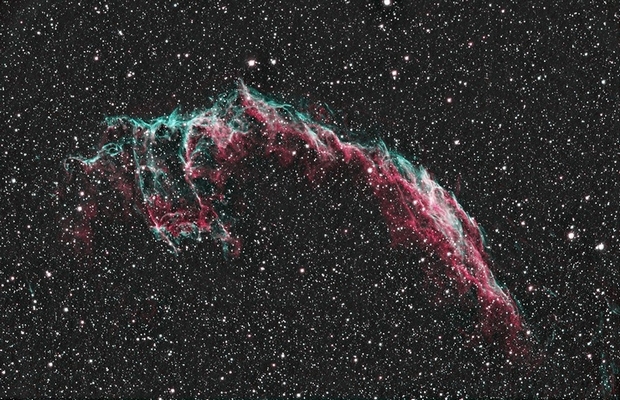
Modern Amateur CCD Image of part of the Eastern Part of the Veil Nebula (NGC 6992) in Cygnus, by Gordon Haynes, taken on the 9th of January 2009, using a Takahashi BRC-250 and a Starlight XPress SXV-H36 CCD, total exposure 4 hours
Modern Amateur Astrophotography
The modern amateur Astrophotographer using only modest equipment to obtain images better than larger but outdated telescopes first appeared the persona of Eugen Von Gothard, a wealthy and talented scientist from Hereny in Hungary.
On the 1st of September 1886, Von Gothard took a photograph of the famous ‘Ring’ nebula (M57) in the constellation of Lyra using a ‘mass produced’ 10.25-inch reflector made by John Browning of London. His photograph clearly showed its faint 15th magnitude central star, a feat only possible visually by instruments much larger than his.
This photograph heralded the rise of the amateur in astronomical photography, who not only took high quality images, but ones which of scientific importance, all with the aid of affordable instruments with apertures of sizes bordering on the small.
The appearance of Von Gothard’s photographs caused a supernova like effect on the astronomical community. Herman Carl Vogel, the Director of the Potsdam Observatory went so far as to express the opinion that the ‘photographs of Herr von Gothard’s taken with this comparatively small instrument show results which far surpass any obtained by eye observation with the largest telescope’.
The Rise of the Amateur
In the years to come Von Gothard was joined by other equally remarkable amateurs, like Alfred Rordame, a violinist from Salt Lake City, Utah, who photographed in 1921 features in the cloudy atmosphere of the planet Venus; or another violinist, the elusive
Marcel De Kerolyr (1873-1969) who took during the years 1929 to 1934 perhaps the finest pre-digital images of Deep Space Objects. De Kerolyr’s 1932 wide field image of the region surrounding the iconic ‘Horsehead’ nebula in Orion, obtained with an 80cm telescope is perhaps the leading contender for the title of ‘Greatest Astronomical Photograph' of all time.
The CCD
However, the greatest advance of the amateur in Astrophotography came in the years which followed the invention of the Charge Coupled Device or CCD in 1969. In 1974 the first digital image of an astronomical object - the Full Moon was obtained with an 8-inch reflector and a CCD chip possessing a resolution of only 10,000 pixels.
In the 1990s the first amateur astronomical CCD cameras began to appear. These relatively primitive devices had pixel resolutions measured in the 100,000s, but nevertheless could be linked to a personal computer for image acquisition and processing functions.
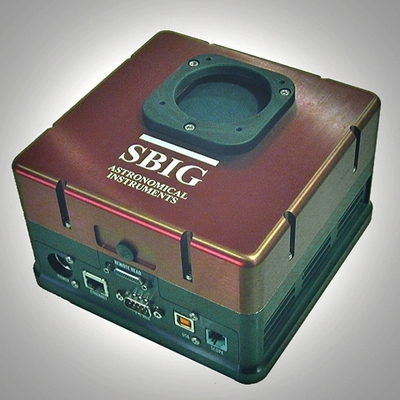
Modern Amateur 'Research' Astronomical CCD Camera: Photograph courtesy of Santa Barbara Imaging Group
Budget 'Professional' Equipment
The coming of the twenty-first century saw even greater advances in amateur CCD technology, when the first budget cameras were introduced alongside research quality megapixel models for those with deeper pockets.
This seed change in CCD technology coupled with the availability of high quality telescopes of Schmidt-Cassegrain design, sturdy computer controlled mounts fitted with accurate GOTO/Tracking DCD Servo motors brought about a revolution that changed the practice of Astrophotography beyond all recognition.
The introduction of Personal computers with fast processor chips and large storage discs from the late 1990s onwards; which when used with sophisticated image acquisition and image processing software provided the amateur with additional and much needed essential resources.
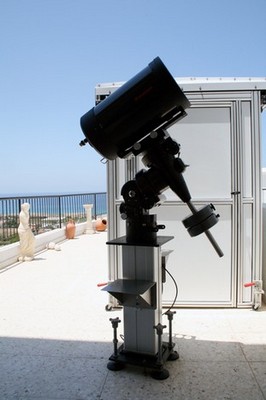
Modern Schmidt-Cassegrain GOTO Telescope: Photography by the Author
Modest Equipment
The modern amateur possessed of only modest equipment of the kind previously described, is now able to take images of the Moon, Planets, Comets, Star Clusters Nebulae and every other kind of object to be found in the heavens with a quality that the early pioneers of astronomical photography probably had never even dreamt was possible. The magnificence of these images was beyond even their pioneering comprehension and imagination.
What is even more remarkable is that these images are regularly taken on a daily basis, not by just one or two amateurs but thousands in every corner of the world. The images they capture are infinitely superior to those obtained in the 1970s by the ‘Great Reflectors’ atop the mountains of California using conventional photographic emulsion based glass plates, at a time when the ‘firstlight’ of a photon hit a CCD chip.
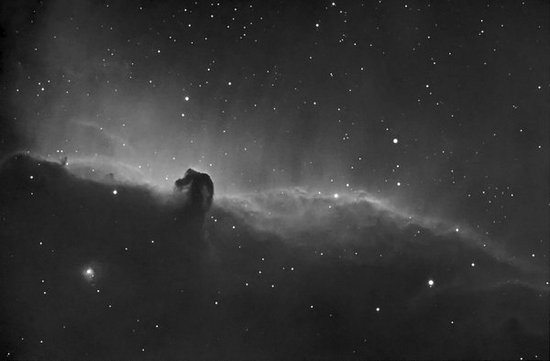
The 'Horsehead' Nebula (B33) in Hydrogen Alpha Light, 4-inch WO FLT refractor, SBIG ST10E CCD, 2009; Photograph courtesy of Theodore Arampatzoglou
Quote
“The average amateur photographer doubtless takes a passing interest in the beauties of the night sky, and nearly every amateur astronomer of my acquaintance is a dabbler in photography. Many seem to be deterred from combining the two hobbies by the impression that nothing can be done without very elaborate and costly apparatus, an impression which the perusal of the average astronomical textbook does little to remove.
Yet photographs of comets, the Milky Way, etc., from which valuable scientific results have been deduced, have been secured with simple and inexpensive apparatus of a portable character.
One of our greatest living astronomers, Professor G. E. Hale, states, ‘The results of amateur observations may not only be useful—they may equal, or even surpass, the best products of the largest institutions’.”
Henry Hayden Waters (1880-1939), from Astronomical Photography for Amateurs, 1921.
To read more on this subject read the eBook chapter on Modern Digital Astrophotography or buy the eBook 'Catchers of the Light'.
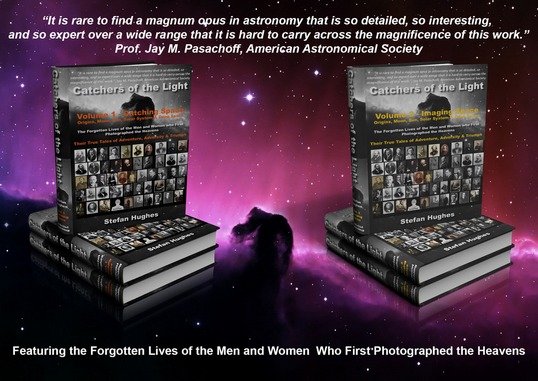
Buy the eBook or Printed Book at the 'Catchers of the Light' shop.